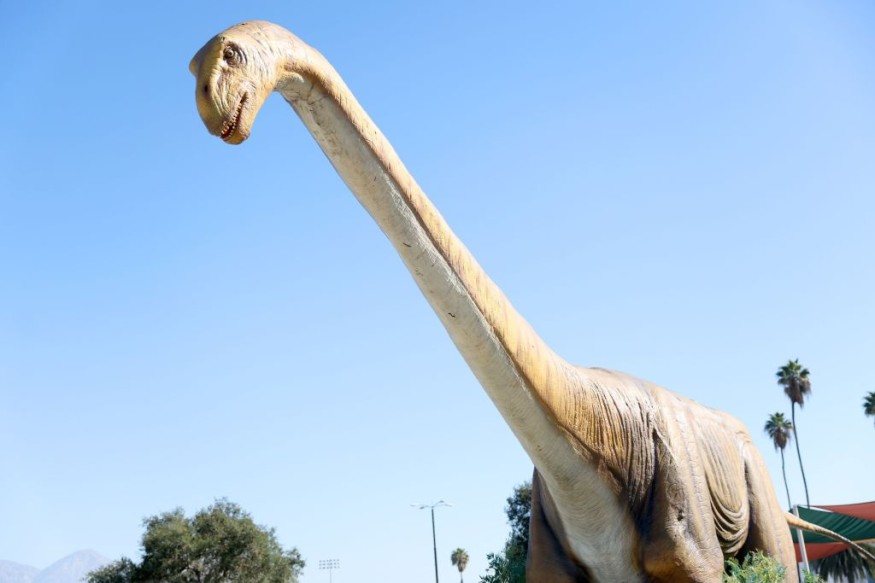Remains of Giant, Plant-Eating Dinosaur Discovered in Chile

A new species of plant-eating dinosaur was discovered by scientists in Chile. The remains of the gigantic dinosaur were unearthed in the country's Atacama Desert, near the city of Copiapó, BBC reported.
The remains of Arackar licanantay, which means "Atacama bones" in the Kunza language, were reported to be unearthed by a group led by Chilean geologist Carlos Arévalo during the 1990s.
Research regarding the species was conducted during the 2000s and the results were made public on Monday.
In late March, the scientist, who found a well-preserved skull of a meat-eating dinosaur in Argentina, named the ancient beast the "one who causes fear."
The remains of the "Llukalkan aliocranianus" dinosaur, which included a preserved and uncrushed braincase, were discovered in 2015 by accident in La Invernada, near Rincón de los Sauces city in Neuquén Province.
The dinosaur's full name comes from the native Mapuche language Llukalkan, which means the "one who causes fear" - and aliocranianus is Latin for "different skull."
The meat-eating dinosaur reportedly roamed in South America 85 million years ago. It was said to be 16-foot-long and weigh between one and five tonnes.
Like the Tyrannosaurus rex, the Llukalkan dinosaur was also two-legged with very short arms but was smaller than the giant T. rex. This elephant-sized dinosaur also has short horns and tiny fingers.
New Species of Dinosaur
Reuters reported that the plant-eating dinosaur found in northern Chile had a small head and long neck and tail. The so-called titanosaur also has an unusually flat back compared with others like it.
The remains, which include parts of a femur, a humerus, and the ischium, and vertebral elements of the back and neck, were excavated in one of the driest deserts in the world.
Paleontological studies showed that the Arackar dinosaur lived in areas with flowering plants, ferns, and palm trees. The creature was found to have lived during the Late Cretaceous period, which occurred 66-80 million years ago.
The Arackar was identified to be a sauropod dinosaur. Experts believed that the discovered fossil of Arackar belonged to a juvenile, Associated Press reported.
Although a juvenile, the estimated length of the creature is about 20 feet. Compared to other titanosaurs, Arackar appears to be smaller in size.
The team noted that the Arackar is the third dinosaur named from Chile and the third titanosaur from the western side of the Andes in South America.
BBC reported that the dinosaur discovered in Argentina in 2014 was one of the biggest dinosaurs excavated in the said country. Also a titanosaur, it has an estimated length of more than 37 meters.
The Discovery in Chile
Arévalo exhumed the Arackar's remains with experts from Chile's National Geology and Mining Service during a dig 75 kilometers south of Copiapó.
The discovery of the new species of the dinosaur was formally announced in an article published in the journal of Cretaceous Research.
"This represents a relevant milestone for the Chilean paleontological heritage," said David Rubilar, the Head of the Paleontology Department at Chile's National Museum of Natural History.
Rubilar also led the team responsible for discovering the plant-eating dinosaur. The team was made up of experts from Chile's National Museum of Natural History, the University of Chile's Paleontological Network, and the Laboratory of Dinosaurs of Argentina's National University.
The remains of the Arackar dinosaur will eventually be displayed in Chile's Museum of Natural History.
WATCH: New Dinosaur Species Found in Chile's Atacama Desert Unveiled - From AFP News Agency
Subscribe to Latin Post!
Sign up for our free newsletter for the Latest coverage!

















